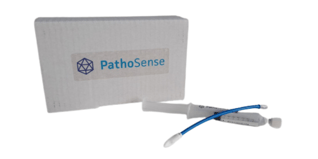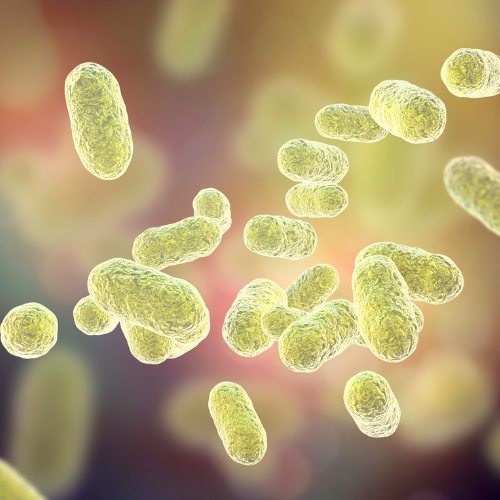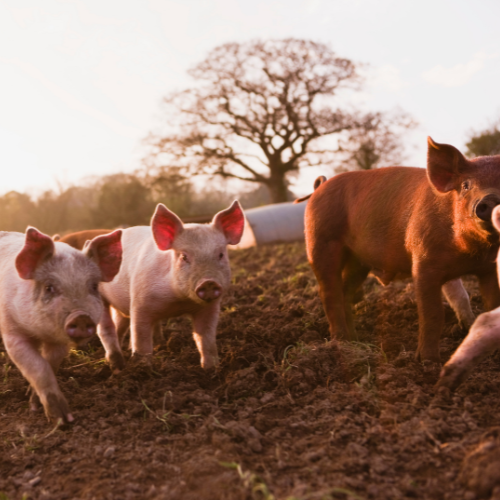PathoSense has developed a comprehensive platform for sample collection to diagnostic interpretation for infectious diseases in veterinary medicine. Utilizing nanopore sequencing technology from Oxford Nanopore Technologies in the United Kingdom, this platform is suitable for all animal species and various types of samples. Using the PathoSense patented swab, veterinarians can effortlessly collect samples and immediately purify pathogens in the specimen. The analysis registration is seamlessly done through an intuitive mobile app.
'Quality in, Quality out' is a well-known saying often used in the world of data analysis, and it holds true for sample collection as well. To initiate precise diagnostics, an essential first stage involves collecting good samples with our state-of-the-art sampling kit. Which types of samples are suitable? How to make the right selection? What types should be avoided?
Sampling kit with patented swab
Our sampling kit includes a
patented swab with a tip made of three layers of polyamide. This unique design serves as a
purification tool, unlike traditional swabs that merely collect samples. The goal is to purify infectious particles and eliminate free genetic material and cells in the sample. This purification process is crucial for accurate diagnostic results using sequencing technologies.

The sampling kit plays a crucial role in ensuring standardization and efficiency in sample processing. It not only enhances the quality of samples, it also accelerates the laboratory analysis. Additionally, it enables the collection of samples from various animals for a comprehensive PathoSense analysis.
In some cases, the PathoSense swab may be used directly, while in some applications alternative sampling strategies may lead to best results. In these cases, the PathoSense swab is used as a purification tool. Examples are:
- a fine swab for small pets or poultry
- a long swab for deep sampling in the nose of a cattle or horse
- bronchoalveolar lavages and tracheobronchial swab samples
- serum and cerebrospinal fluid samples
When shipping samples to the laboratory, it is crucial to ensure that they are sent in a properly cooled (4°C) manner to maintain sample integrity.
Key factors: animal selection, timing, and sampling location
The primary goal is to gather enough infectious agents, emphasizing the importance of precise sampling at the correct location and time. Veterinarians play a crucial role in this sample collection and can greatly impact the diagnostic results, regardless of the technology or diagnostics used.
For example, when targeting specific viruses like influenza in pigs, it is vital to collect samples within the first two to three days of infection to ensure accurate detection in the lungs before the virus dissipates.
Consider the pathogenesis carefully to identify the best spot for sample collection. We encountered a case of systemic disease involving the acute mortality of young pigeons in Germany. Through precise incisions in the livers upon necropsy and careful sample collection with our swab, we were able to isolate both the rotavirus and the entire genome. This strain was identified as a highly aggressive variant previously reported in Germany and Australia, providing valuable strain information for immediate action.
What types of samples to collect?
Upper respiratory disease
Upper respiratory infections involve the nose and throat, causing symptoms such as sneezing, nasal congestion, conjunctivitis and discharge from the nose or eyes. A typical upper respiratory infection is chronic rhinitis or conjunctivitis in cats.
A fine swab can be used to collect precise material from the conjunctiva, the nose and the oropharynx. The swab with the material is then placed in the provided tube. To purify the sample, the PathoSense swab is utilized following the instructions in the movie below. The syringe is connected to the PathoSense swab and the fluid is passed through it. The sample is then mixed thoroughly for 30 seconds to make a suspension of the collected mucus, after which the suspension is aspirated through the swab. Once this process is complete, the sample in the syringe is now prepared for submission to the lab. The QR code is included for easy registration in the mobile app for laboratory processing.
Case example
An intriguing case of upper respiratory disease involved a cat suffering from chronic purulent conjunctivitis in a multi-cat household. The highly contagious nature of the condition led to its rapid spread among the feline companions. By conducting a conjunctiva swab, the vet identified Chlamydia felis, allowing for a more comprehensive treatment approach. Addressing the issue not only locally but also systemically proved to be highly effective in accelerating the bacterial shedding process.
Deep respiratory diseases
When dealing with respiratory issues in nursery or fattening pigs, characterized by symptoms like coughing or dyspnea, veterinarians often choose to use tracheobronchial swabs (TBS). This method is ideal to collect mucus from deep within the airways using a catheter, ensuring a meticulous extraction process for subsequent analysis. The instructional video below shows how to process TBS further using our sampling kit.
Case example
PathoSense conducted extensive research into the health of swine, with a particular focus on respiratory and enteric disease complexes. You can find a detailed blog article on these complexes right here on our blog.
For
cattle veterinarians dealing with pneumonia, utilizing
bronchoalveolar lavages is highly recommended. Collect lavages from multiple animals in separate tubes, mix them equally in a provided tube, and then use our sampling kit to aspirate a sample. Due to the fluid consistency of these samples, there is no need to mix them with the syringe contents. Now, simply empty the syringe beforehand and draw up the BAL fluid through the swab in the syringe.
Calves that are coughing at a very young age is quite typical and in these cases bronchioalveolar lavages are often collected by field veterinarians. These lavages may reveal a mix of viruses and bacteria, including influenza D virus, bovine coronavirus, RSV, which can cause early damage to the lungs. Additionally, bacterial infections with different Mycoplasma species may be present, together with other bacteria, further complicating the situation.
Enteric diseases
Diarrhea is a common issue in various animal species, such as pigs, young cows and puppies, which presents an interesting application to explore. Utilize the PathoSense swab to collect rectal or cloacal samples from up to 5 animals, ensuring to avoid excessive material to prevent clogging of the swab during sample purification. It is important to not collect feces from the ground of the stables, as these samples may be contaminated with environmental species and do not accurately represent the pathogens present in the animal.
Case example
In young calves, bovine norovirus is a common and more novel pathogen found. Much like its human counterpart, which often leads to unfortunate cruise ship lockdowns due to widespread vomiting and diarrhea, this virus can cause gastroenteritis. Similar complexities arise in piglets, where a blend of rotavirus A, B, and C can lead to diarrhea piglets in the suckling piglets together with other viruses and bacteria.
Systemic diseases
In other scenarios, like systemic diseases such as viremia or bacteremia, serum may be used. However, it's essential to carefully consider the specific pathology before determining the type of sample to collect. For instance, in cases involving neurological symptoms, cerebrospinal fluid could be a more appropriate option. As demonstrated in the instructional video, it is advised not to purify serum and cerebrospinal fluid with the PathoSense swab. Additionally, maintaining the sample at 4°C and limiting transport time are crucial steps to ensure sample integrity.
Samples from necropsy
Another valuable application of PathoSense involves utilizing samples from deceased animals. It is advisable to send in samples from expired animals only if the tissues are still fresh, exhibit no signs of postmortem decay and stored at 4°C. Furthermore, we partner with trusted diagnostic laboratories that provide exceptional necropsy services. In this particular scenario, our specialized swab offers a direct approach to sampling lesions, as demonstrated in the accompanying video. By carefully making precise incisions in the targeted tissue and utilizing the swab to meticulously collect material at the site of infection, a highly effective sampling process is ensured. By utilizing this approach, there is no longer a need to mix suspensions with risky mixers or beads. This eliminates the risk of excessive cell lysis and the release of host genetic material, preserving the integrity of the sample for accurate diagnostics.
Case example
An interesting case scenario for this application involved a fish farm plagued by high mortality rates among young animals in their larval stages. Despite sending samples to various labs for investigation, no positive results were obtained. However, upon receiving samples from these larvae and conducting an analysis of a homogenate, a distinct and resilient reovirus was discovered - a virus known for its environmental persistence. By addressing this infection, the farm was able to effectively resolve the issue at hand.
Reproductive disease
Furthermore diagnosing reproductive diseases can vary across different species. Typically, samples can be extracted from the fetus, swabs can be gathered from the placenta, or material can be sourced from the mother if the problem is suspected to originate there.
Which samples should you avoid collecting?
Avoid collecting oral fluids or chewing cords, as well as processing fluids, as they are common matrices in swine that tend to be too contaminated for sequencing-based diagnostics approaches These samples may only provide a microbiome readout of the environment, making them not recommended for testing. The same applies to samples collected from the floor.
What comes next post sample collection?
Following sample collection, the specimen can be registered within our mobile application.
Subsequently, nanopore sequencing technology is utilized in the lab for a thorough analysis of viruses and bacteria, eliminating the need for pre-selection of primers or tools. Once the sequencing is complete, a semi-quantitative report is promptly delivered to your mobile device, complete with a concise interpretation where applicable. The input of the anamnesis and metadata into the app provides essential background information and assists in crafting a concise interpretation note.
Are you in doubt about case? Please contact us via contact form below 👇







